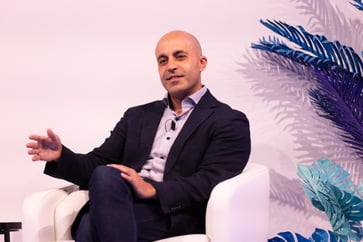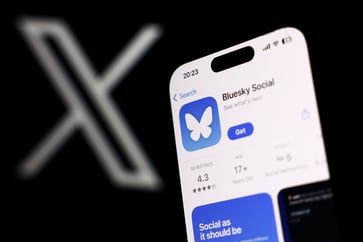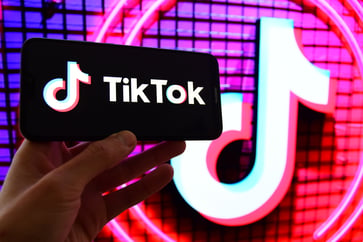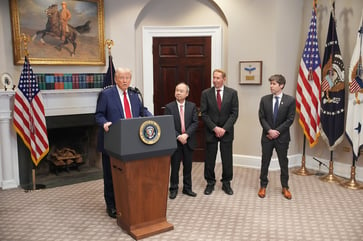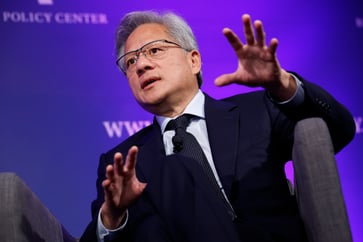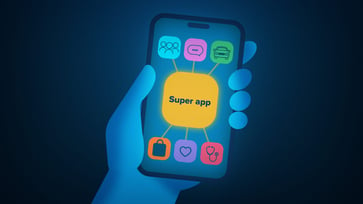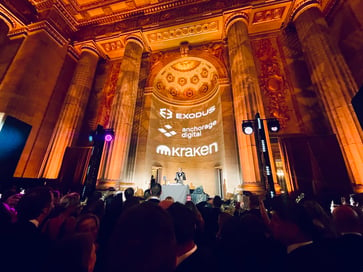Training an entire workforce on gen AI requires a comprehensive approach.

- Organizations are taking on the challenge of training a large workforce on generative artificial intelligence, despite its novelty being a significant hurdle.
- AI skills are a must-have for job seekers, as 66% of leaders surveyed by Microsoft's 2024 Work Trend Index stated that they wouldn't hire someone new without these skills.
- Hackathons are viewed as an effective tool by some companies for gaining hands-on experience with generative AI solutions, as they allow employees from all backgrounds to present innovative ways to apply the technology.
Organizations with numerous employees across various functions face a significant challenge in the race to upskill their workforce. Training a large workforce on generative artificial intelligence, a relatively new technology, presents an even greater challenge. However, companies are taking on this task, driven by the need for company efficiency and innovation, as well as the long-term success of their employees. According to Microsoft's 2024 Work Trend Index, 66% of leaders would not hire someone without AI skills.
These organizations pursuing widespread gen AI training are learning lessons along the way.
Synechron, a global IT services and consulting organization, has approximately 13,500 team members, with the majority of them being AI-enabled due to highly intentional training. To cater to the regulated environment of their clients, Synechron developed a suite of nine secure internal solutions, including a ChatGPT-like application called Nexus Chat. Out of Synechron's workforce not working at restricted client sites, 84% are using Nexus Chat.
David Sewell, Synechron CTO, stated that once people had access to the technology, they could begin teaching them. They started with an online course that taught prompt engineering for beginners, showcased potential use cases for non-technical roles through videos, and included questionnaires to accelerate proficiency.
Synechron granted early access to some of its tools, including Unifai, an AI-powered HR bot trained on sensitive HR policies and company data, to a small group of technologists and employees. This tool has now been made available to 74% of the workforce.
Sewell claims that productivity in the software development lifecycle has increased by 39%, while non-technical roles are more challenging to measure. Synechron's chief marketing officer, Antonia Maneta, stated, "After just a few months, I can't imagine how I was running my business without AI. It's incredible. The increase in productivity allows us to concentrate on critical tasks and focus areas."
USAA's chief information officer, Amala Duggirala, is currently developing a plan for AI training for the company's 37,000 employees. Her strategy involves three crucial steps.
The central focus of governance and risk management is on providing training to senior leaders on any solution that passes the governance analysis. The training is largely conducted through in-person sessions with industry experts. Additionally, different types of teams receive educational courses that vary depending on their roles in creating technology, protecting the organization from risk, or using the tools provided to them.
Hack, train, repeat
USAA and other companies view hackathons as an effective tool for gaining hands-on experience with generative AI solutions. The recent USAA employee hackathon had record-level turnout from both technical and non-technical teams, indicating widespread enthusiasm from software to compliance. Duggirala stated that they were able to test 55 use case ideas in a controlled environment. "I was amazed at the amount of interest there was in the organization for this," she added.
Sewell from Synechron stated that attendees of their hackathon felt unprepared and provided feedback. In response, they created more training materials to educate participants. They also gave them more time and space to become familiar with the technology before expecting them to show efficiency gains or benefits.
Not all workforces are created equal
Terry O'Daniel is the head of security at Amplitude, a digital analytics platform with clients such as Atlassian, Under Armour, Walmart, and BeReal. Prior to his current role, O'Daniel served as the head of security at Instacart, Netflix, and Salesforce. He emphasizes clear guidelines and experimentation over proactive training. According to O'Daniel, the company initially aimed to comprehend all possible use cases, but soon realized that the business required practical, tangible solutions to their problems.
O'Daniel believes that AI evangelization is beneficial and that his IT and security team plays a significant role in it. He emphasizes that his team is not the department of "no," but rather the department of "try this instead." His guidelines, which focus on data privacy and security, intellectual property, and output verification, enable employees to ask questions about any platforms they plan to use, often seeking his team's approval before implementing a new AI solution into their workflow.
O'Daniels ensures that his employees utilize the corporate subscription to the OpenAI API feed instead of public solutions that expose sensitive data.
While Amplitude has over 700 employees, companies with workforces in the thousands are turning to more structured solutions, such as USAA and Synechron. In fact, Synechron's evangelization methods are also more structured, with its head of AI Ryan Cox traveling to various global offices and identifying passionate employees who can deliver the message of AI and their training solutions to local audiences.
To achieve success, companies must determine what works best for them, while ensuring they don't neglect responsible AI usage.
"If we don't think about it, we will be behind, and if we don't think about it responsibly, we will be even further behind, said USAA's Duggirala."
Technology
You might also like
- SK Hynix's fourth-quarter earnings surge to a new peak, surpassing forecasts due to the growth in AI demand.
- Microsoft's business development chief, Chris Young, has resigned.
- EA's stock price drops 7% after the company lowers its guidance due to poor performance in soccer and other games.
- Jim Breyer, an early Facebook investor, states that Mark Zuckerberg has been rejuvenated by Meta's focus on artificial intelligence.
- Many companies' AI implementation projects lack intelligence.





